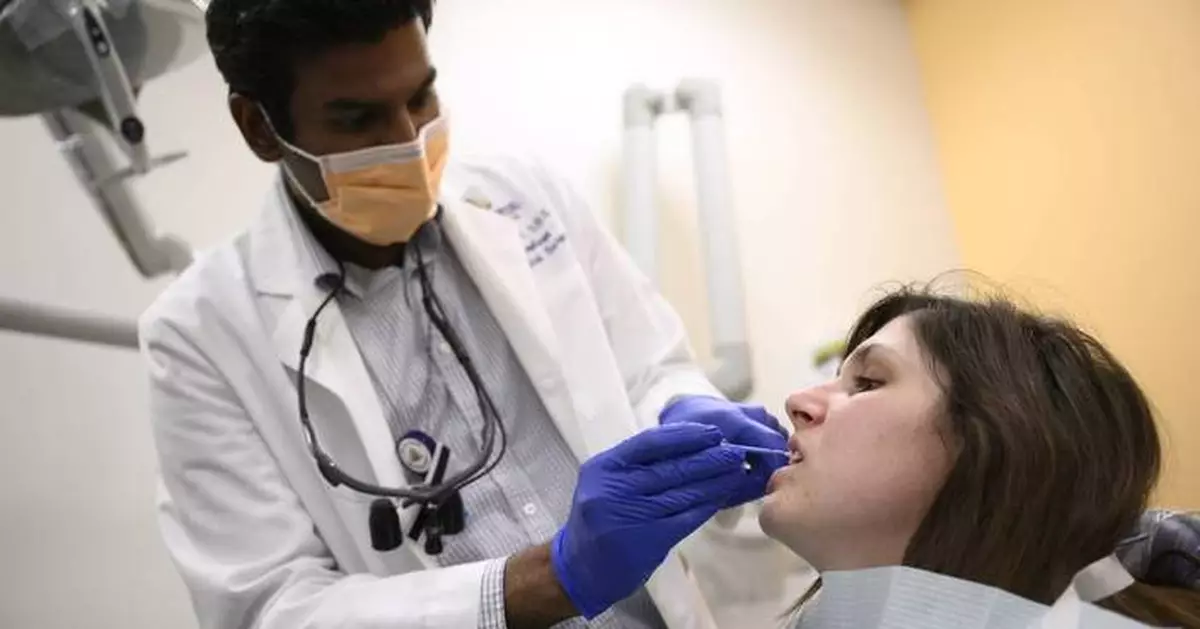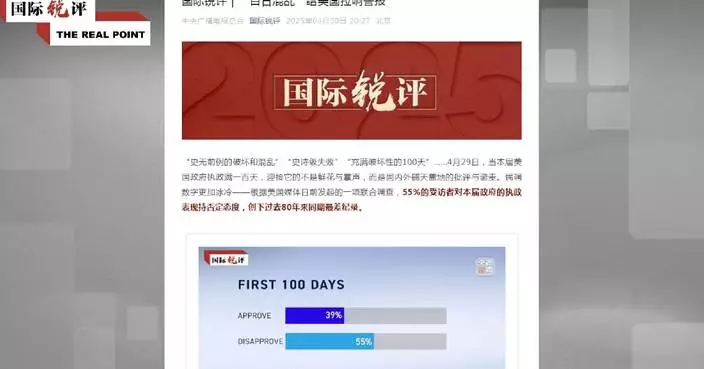When Tristen Boyer recently had a couple of cavities filled, her dentist suggested she get fluoride treatment afterward. She has Crohn’s disease, which puts her at increased risk for tooth decay.
"It’s something I felt like I should get done,” the 22-year-old University of Kentucky student said. “It’s something I’m going to keep doing.”
Click to Gallery
Alexander Daniel, DDS, photographed at the Johns Hopkins Outpatient Center, Friday, Feb. 28, 2025, in Baltimore. (AP Photo/Nick Wass)
Alexander Daniel, DDS, photographed at the Johns Hopkins Outpatient Center, Friday, Feb. 28, 2025, in Baltimore. (AP Photo/Nick Wass)
Alexander Daniel, DDS, photographed at the Johns Hopkins Outpatient Center, Friday, Feb. 28, 2025, in Baltimore. (AP Photo/Nick Wass)
Alexander Daniel, DDS, holds a sample of fluoride at the Johns Hopkins Outpatient Center, Friday, Feb. 28, 2025, in Baltimore. (AP Photo/Nick Wass)
Alexander Daniel, DDS, left, demonstrates fluoride treatment on resident Cameron Onken, right, at the Johns Hopkins Outpatient Center, Friday, Feb. 28, 2025, in Baltimore. (AP Photo/Nick Wass)
Alexander Daniel, DDS, left, demonstrates fluoride treatment on resident Cameron Onken, right, at the Johns Hopkins Outpatient Center, Friday, Feb. 28, 2025, in Baltimore. (AP Photo/Nick Wass)
Alexander Daniel, DDS, left, demonstrates fluoride treatment on resident Cameron Onken, right, at the Johns Hopkins Outpatient Center, Friday, Feb. 28, 2025, in Baltimore. (AP Photo/Nick Wass)
Dentists and hygienists often propose fluoride treatments to patients in the dental chair to prevent cavities and strengthen teeth. But the relatively simple procedure – which involves applying a varnish, gel or foam directly to the teeth – isn’t always covered by insurance, especially for adults.
So when is it worth getting? Here are some ways to figure that out.
If there's a high risk of tooth decay, then professional fluoride treatments can help.
But if “you haven’t seen any decay in years, you’re probably OK. What you’re doing at home is probably enough,” said Dr. Robert Weyant at the University of Pittsburgh.
Besides looking at cavity history, your dentist may also ask about risky behaviors, such as drinking lots of soft drinks, and your oral health regimen.
Patients “who don’t have access to fluoridated water, don’t use fluoridated toothpaste or don’t floss regularly” may be good candidates for fluoride treatments, said Dr. Alex Daniel of Johns Hopkins University.
Treatments may also benefit certain groups more than others. Women in menopause, for example, experience hormonal changes that can lead to oral health problems. And people taking certain medications can get dry mouth, which means fewer bacteria-killing enzymes and potentially more decay.
For patients deemed to be at risk, dentists generally recommend treatments every three, six or 12 months.
Dental fluoride prevents decay by helping tooth enamel – the hard outer layer of the tooth – better resist acid caused by bacteria in the mouth.
“Acid dissolves away tooth enamel, which weakens it – which is what makes cavities," said Ohio dentist Dr. Matthew Messina, a spokesman for the American Dental Association.
Fluoride, a mineral, strengthens the enamel, making it harder.
The scientific evidence behind fluoride treatments is stronger for children than adults. But whether the benefit is stronger for kids is uncertain, Weyant said, because there hasn’t been as much research in adults.
Dentists said there are no safety concerns about the treatment. The only real side effect is an uncommon one called fluorosis, a cosmetic discoloration of the teeth if someone gets a little too much fluoride.
Dental experts acknowledged that recent opposition to fluoride in drinking water by some — including Robert F. Kennedy Jr., the nation's new health and human services secretary —may give some people pause. But even if you use fluoride toothpaste, drink fluoridated water and get occasional in-office fluoride treatments, dentists said you’re getting a relatively small amount of the mineral that poses no danger.
Fluoride treatments cost anywhere from around $25 to $55. Though many insurers cover the cost for kids, adults generally pay out of pocket.
Boyer, who used to get the treatments as a child, paid $30 for her first adult treatment. Though she wishes it was covered by insurance, she said that's a small price to pay to prevent decay, expensive dental procedures and possible tooth loss.
“We only have one set of teeth,” she said. “The longer you can keep them, the longer you should.”
The Associated Press Health and Science Department receives support from the Howard Hughes Medical Institute’s Science and Educational Media Group and the Robert Wood Johnson Foundation. The AP is solely responsible for all content.

Alexander Daniel, DDS, photographed at the Johns Hopkins Outpatient Center, Friday, Feb. 28, 2025, in Baltimore. (AP Photo/Nick Wass)

Alexander Daniel, DDS, photographed at the Johns Hopkins Outpatient Center, Friday, Feb. 28, 2025, in Baltimore. (AP Photo/Nick Wass)

Alexander Daniel, DDS, photographed at the Johns Hopkins Outpatient Center, Friday, Feb. 28, 2025, in Baltimore. (AP Photo/Nick Wass)
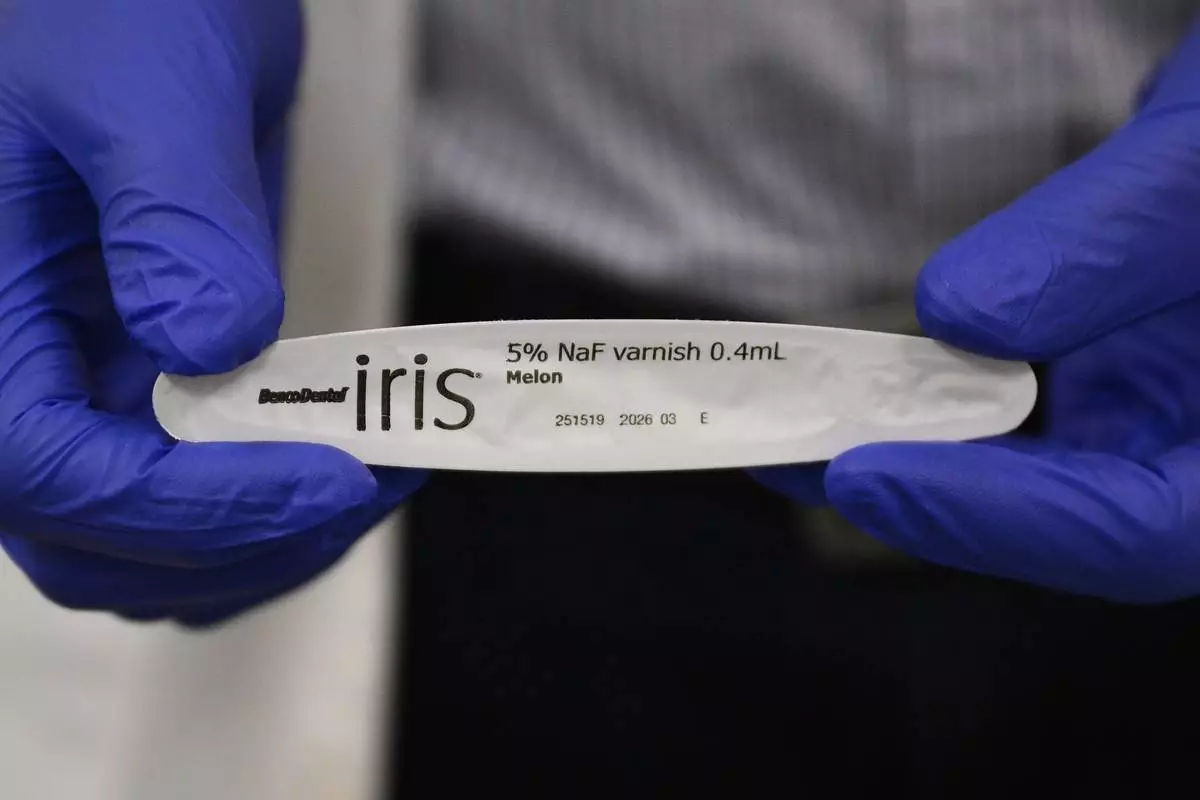
Alexander Daniel, DDS, holds a sample of fluoride at the Johns Hopkins Outpatient Center, Friday, Feb. 28, 2025, in Baltimore. (AP Photo/Nick Wass)
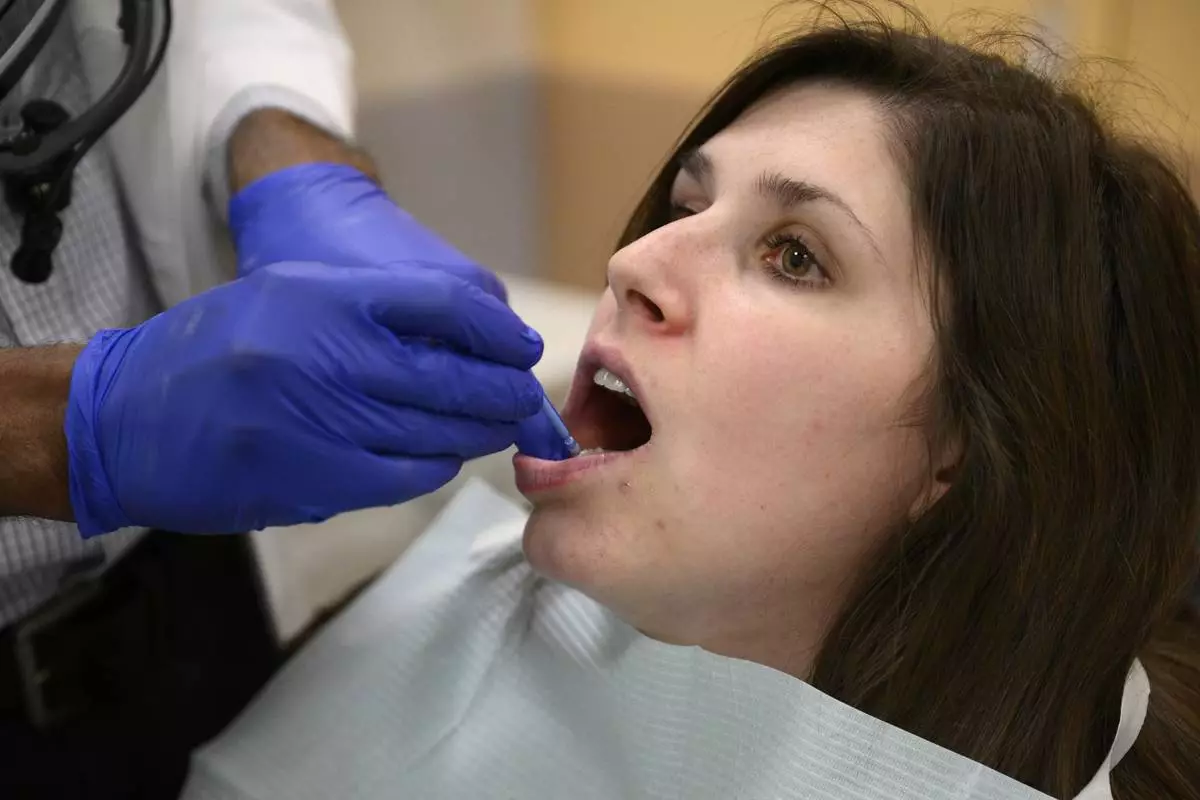
Alexander Daniel, DDS, left, demonstrates fluoride treatment on resident Cameron Onken, right, at the Johns Hopkins Outpatient Center, Friday, Feb. 28, 2025, in Baltimore. (AP Photo/Nick Wass)
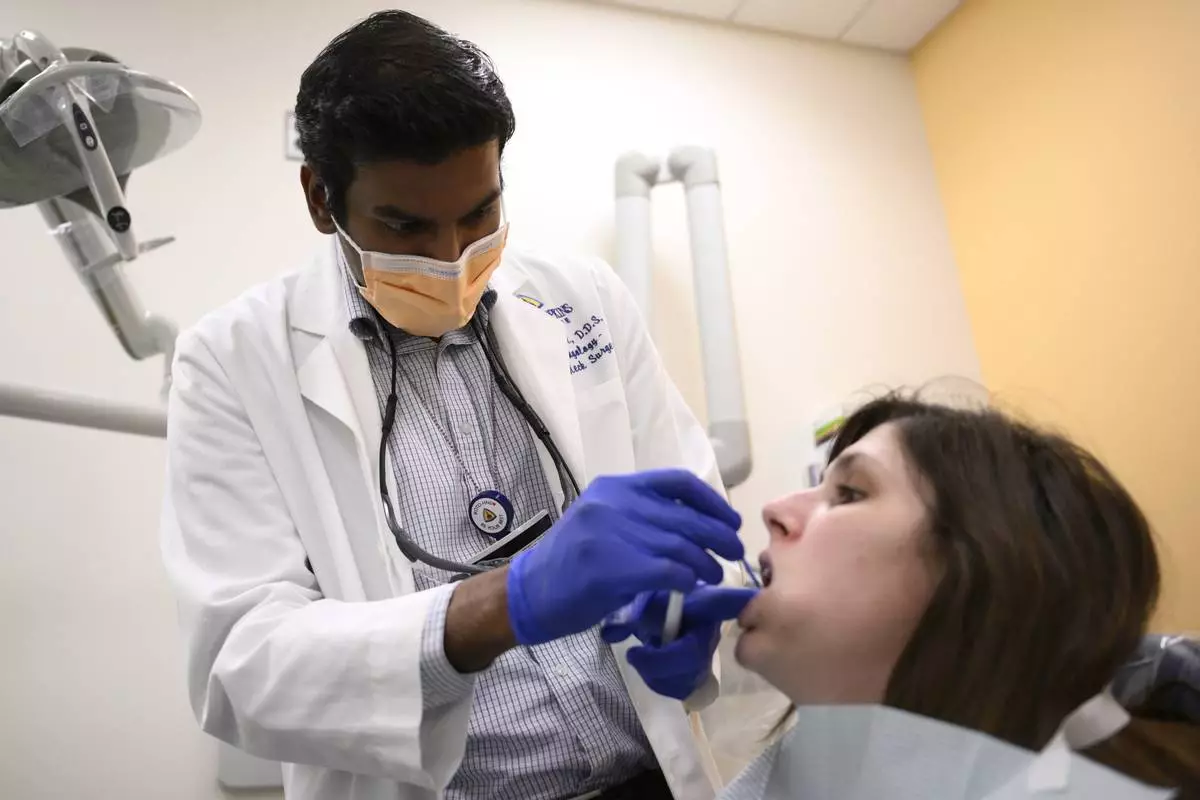
Alexander Daniel, DDS, left, demonstrates fluoride treatment on resident Cameron Onken, right, at the Johns Hopkins Outpatient Center, Friday, Feb. 28, 2025, in Baltimore. (AP Photo/Nick Wass)
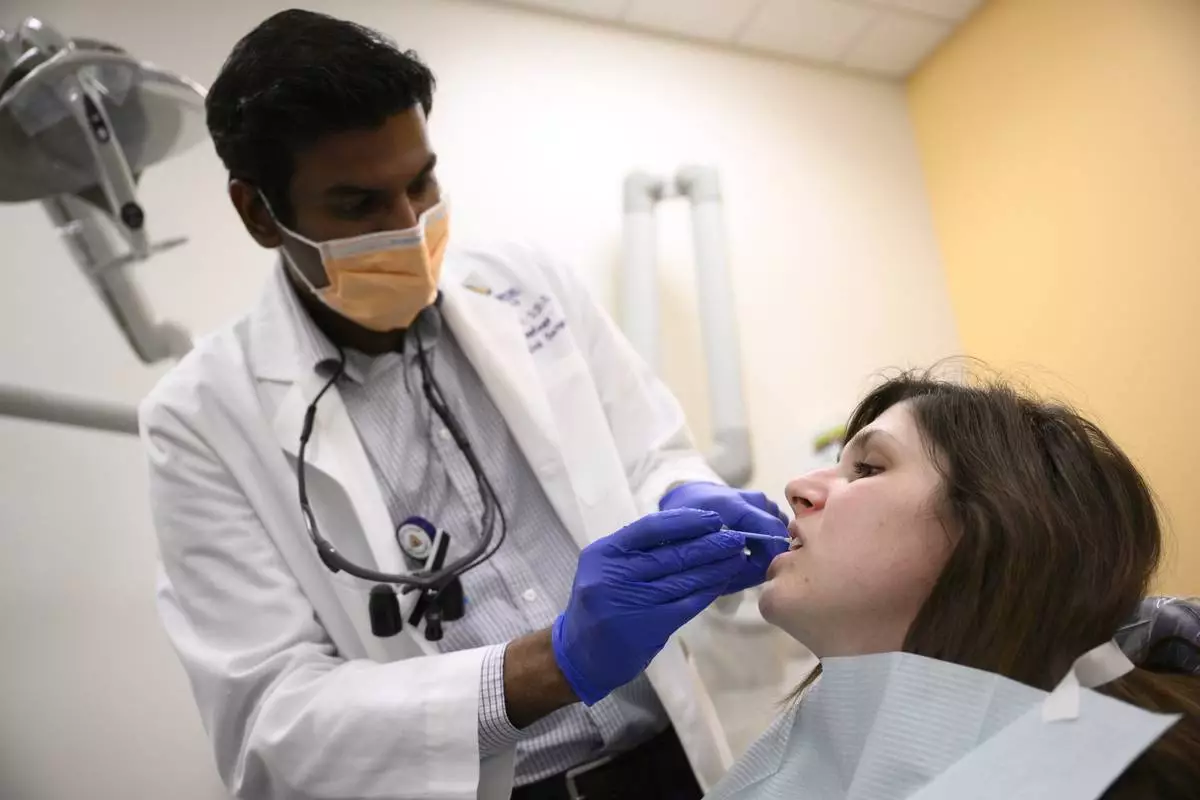
Alexander Daniel, DDS, left, demonstrates fluoride treatment on resident Cameron Onken, right, at the Johns Hopkins Outpatient Center, Friday, Feb. 28, 2025, in Baltimore. (AP Photo/Nick Wass)
WASHINGTON (AP) — President Donald Trump said Thursday he's nominating his national security adviser Mike Waltz to serve as United Nations ambassador in a major shake-up of his national security team.
The president said Secretary of State Marco Rubio will serve simultaneously as acting national security adviser while maintaining his position at the State Department.
Trump announced the moves shortly after news broke that Waltz was leaving the administration, just weeks after it was revealed that he had added a journalist to a Signal chat being used to discuss military plans.
“I am pleased to announce that I will be nominating Mike Waltz to be the next United States Ambassador to the United Nations. From his time in uniform on the battlefield, in Congress and, as my National Security Advisor, Mike Waltz has worked hard to put our Nation’s Interests first,” Trump wrote on social media.
“In the interim, Secretary of State Marco Rubio will serve as National Security Advisor, while continuing his strong leadership at the State Department. Together, we will continue to fight tirelessly to Make America, and the World, SAFE AGAIN.”
There is precedent for the secretary of state to serve simultaneously as national security adviser. Henry Kissinger held both positions from 1973 to 1975.
Waltz came under searing scrutiny in March after revelations that he added journalist Jeffrey Goldberg to a private text chain on the encrypted messaging app Signal, which was used to discuss planning for a sensitive March 15 military operation against Houthi militants in Yemen.
Trump’s decision to move Waltz to the U.N. comes weeks after he pulled his pick for the job, Rep. Elise Stefanik of New York, from consideration.
Stefanik went through a confirmation hearing, but her nomination was pulled in March because her vote to advance Trump’s agenda remains crucial to Republicans in the House.
“I’m deeply honored to continue my service to President Trump and our great nation,” Waltz said of the nomination.
A far-right ally of the president, Laura Loomer, had been targeting Waltz, telling Trump in a recent Oval Office conversation that he needs to purge aides who she believes are insufficiently loyal to the “Make America Great Again” agenda.
Waltz served in the House representing Florida for three terms before being tapped for national security adviser.
In his second term, the Republican president had been looking to avoid the tumult of his first four years in office, during which he cycled through four national security advisers, four White House chiefs of staff and two secretaries of state.
The Signal chain episode also showed that Defense Secretary Pete Hegseth provided the exact timings of warplane launches and when bombs would drop. Waltz had previously taken “full responsibility” for building the message chain and administration officials described the episode as a “mistake” but one that caused Americans no harm. Waltz maintained that he was not sure how Goldberg ended up in the messaging chain, and insisted he did not know the journalist.
Trump and the White House — which insisted that no classified information was shared on the text chain — have stood by Waltz publicly throughout the episode. But the embattled national security adviser was also under siege from personalities such as Loomer, who had been complaining to administration officials that she had been excluded from the vetting process for National Security Council aides.
In her view, Waltz relied too much on “neocons” — referring to hawkish neoconservatives within the Republican Party — as well as others who Loomer argued were “not-MAGA-enough” types.
As reports began to circulate that Waltz could be leaving the administration, Loomer appeared to take credit in a post on the social media site X, writing: “SCALP.”
“Hopefully, the rest of the people who were set to be fired but were given promotions at the NSC under Waltz also depart,” Loomer wrote in another post.
Loomer had taken a similar victory lap when several other NSC officials were dismissed last month one day after she met with Trump.
Questions are also swirling around Hegseth and his role in the Signal chat.
While Waltz set it up, Hegseth posted times for aircraft launches and bomb drops into the unsecured app and shared the same information with dozens of people in a second chat, including his wife and brother.
The Associated Press reported that Hegseth also bypassed Pentagon security protocols to set up an unsecured line for a personal computer in his office –- beside terminals where he was receiving classified information. That raises the possibility that sensitive information could have been put at risk of potential hacking or surveillance.
The Pentagon inspector general is investigating Hegseth’s use of Signal, and he has faced criticism from Democrats and even some Republicans. It has added to the turmoil at the Pentagon at a time when Hegseth has dismissed or transferred multiple close advisers. Nonetheless, Trump has maintained public confidence in Hegseth.
Waltz shift from national security adviser to U.N. ambassador nominee means he will now have to face the Senate confirmation process he was able to avoid January.
The process, which proved to be difficult for a number of Trump’s Cabinet picks, will give lawmakers, especially Democrats, the first chance to grill Waltz on his decision to share information about an imminent U.S. airstrike on Signal. The group chat, which Waltz created, included several high-level Trump administration officials and the editor-in-chief of The Atlantic magazine.
—-
Associated Press writer Tara Copp and Matthew Lee contributed to this report.

President Donald Trump speaks during a cabinet meeting at the White House, Wednesday, April 30, 2025, in Washington, as Secretary of State Marco Rubio, left, and Secretary of Defense Pete Hegseth, look on. (AP Photo/Evan Vucci)

Secretary of State Marco Rubio attends a National Day of Prayer event in the Rose Garden of the White House, Thursday, May 1, 2025, in Washington. (AP Photo/Evan Vucci)
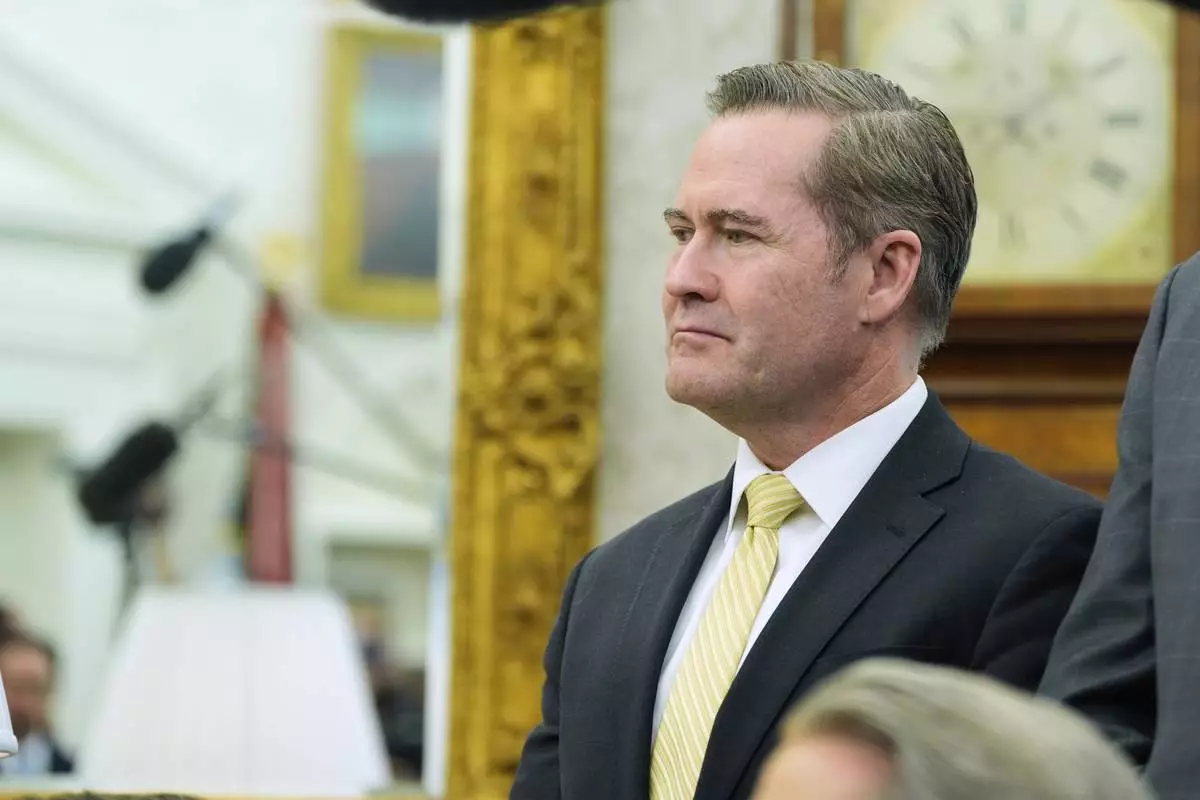
White House national security adviser Mike Waltz listens as President Donald Trump meets with Italy's Prime Minister Giorgia Meloni in the Oval Office of the White House, Thursday, April 17, 2025, in Washington. (AP Photo/Alex Brandon)
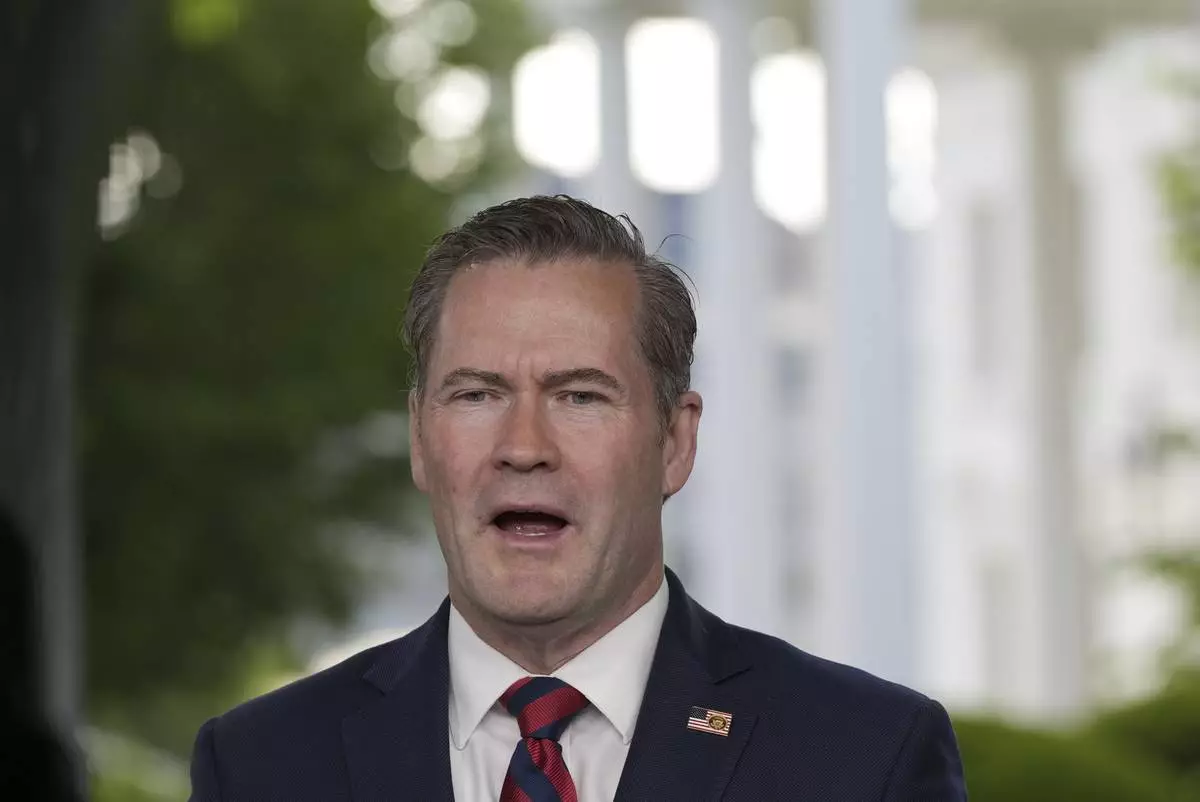
National Security Advisor Mike Waltz speaks during a television interview at the White House, Thursday, May 1, 2025, in Washington. (AP Photo/Alex Brandon)
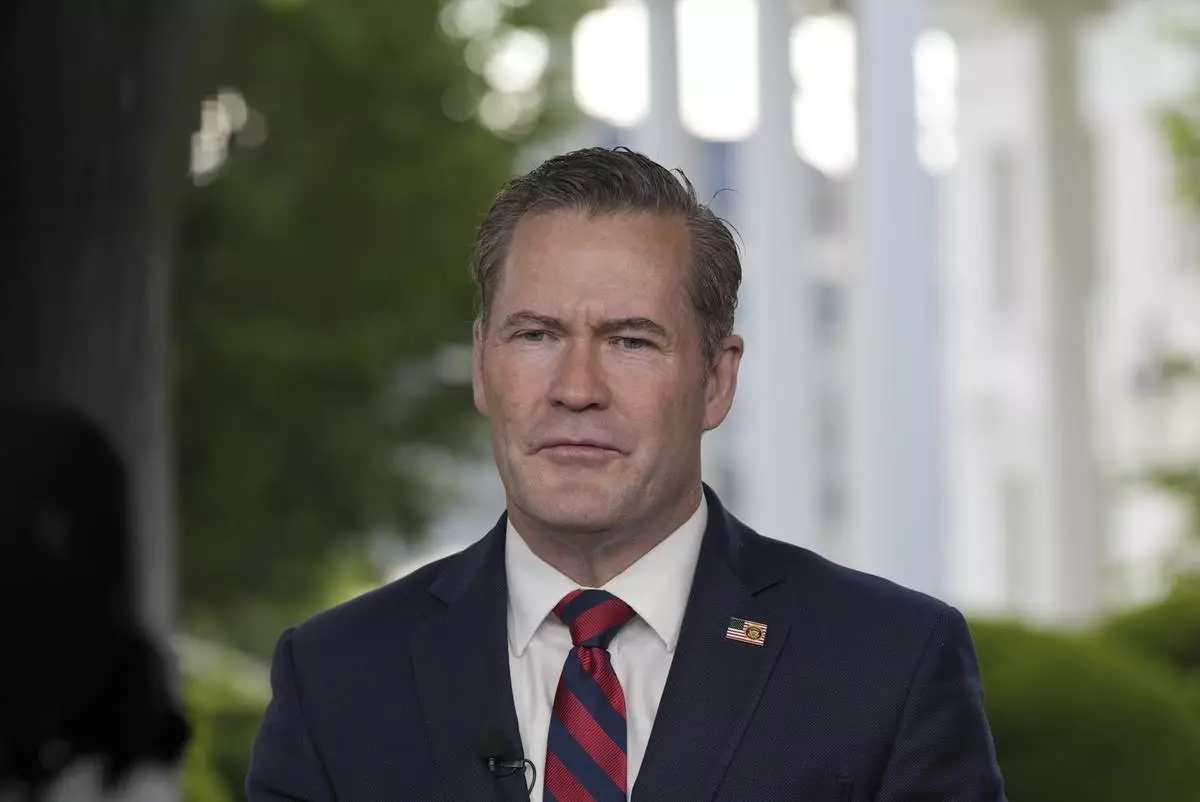
National Security Advisor Mike Waltz speaks during a television interview at the White House, Thursday, May 1, 2025, in Washington. (AP Photo/Alex Brandon)









